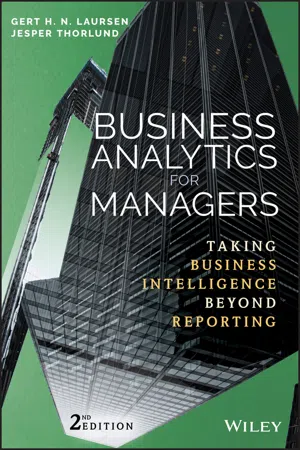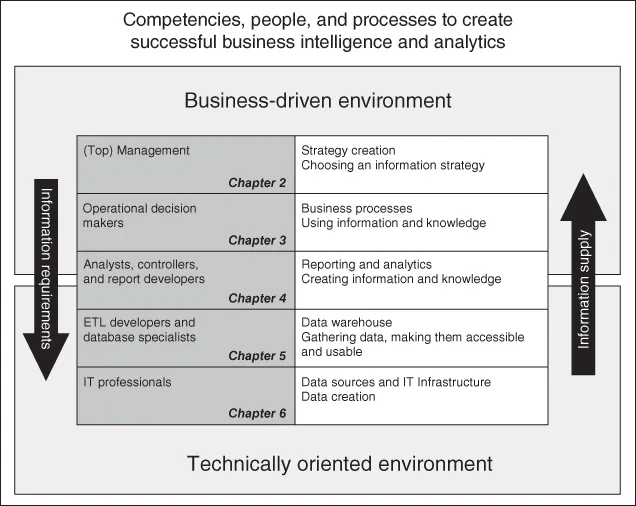
Business Analytics for Managers
Taking Business Intelligence Beyond Reporting
- English
- ePUB (mobile friendly)
- Available on iOS & Android
Business Analytics for Managers
Taking Business Intelligence Beyond Reporting
About this book
The intensified used of data based on analytical models to control digitalized operational business processes in an intelligent way is a game changer that continuously disrupts more and more markets. This book exemplifies this development and shows the latest tools and advances in this field
Business Analytics for Managers offers real-world guidance for organizations looking to leverage their data into a competitive advantage. This new second edition covers the advances that have revolutionized the field since the first edition's release; big data and real-time digitalized decision making have become major components of any analytics strategy, and new technologies are allowing businesses to gain even more insight from the ever-increasing influx of data. New terms, theories, and technologies are explained and discussed in terms of practical benefit, and the emphasis on forward thinking over historical data describes how analytics can drive better business planning. Coverage includes data warehousing, big data, social media, security, cloud technologies, and future trends, with expert insight on the practical aspects of the current state of the field.
Analytics helps businesses move forward. Extensive use of statistical and quantitative analysis alongside explanatory and predictive modeling facilitates fact-based decision making, and evolving technologies continue to streamline every step of the process. This book provides an essential update, and describes how today's tools make business analytics more valuable than ever.
- Learn how Hadoop can upgrade your data processing and storage
- Discover the many uses for social media data in analysis and communication
- Get up to speed on the latest in cloud technologies, data security, and more
- Prepare for emerging technologies and the future of business analytics
Most businesses are caught in a massive, non-stop stream of data. It can become one of your most valuable assets, or a never-ending flood of missed opportunity. Technology moves fast, and keeping up with the cutting edge is crucial for wringing even more value from your data— Business Analytics for Managers brings you up to date, and shows you what analytics can do for you now.
Frequently asked questions
- Essential is ideal for learners and professionals who enjoy exploring a wide range of subjects. Access the Essential Library with 800,000+ trusted titles and best-sellers across business, personal growth, and the humanities. Includes unlimited reading time and Standard Read Aloud voice.
- Complete: Perfect for advanced learners and researchers needing full, unrestricted access. Unlock 1.4M+ books across hundreds of subjects, including academic and specialized titles. The Complete Plan also includes advanced features like Premium Read Aloud and Research Assistant.
Please note we cannot support devices running on iOS 13 and Android 7 or earlier. Learn more about using the app.
Information
Chapter 1
The Business Analytics Model
OVERVIEW OF THE BUSINESS ANALYTICS MODEL

Strategy Creation
Business Processes and Information Use
Types of Reporting and Analytical Processes
Data Warehouse
Data Sources: IT Operations and Development
Table of contents
- Cover
- Wiley & SAS Business Series
- Title Page
- Copyright
- Table of Contents
- Foreword
- Introduction
- Chapter 1: The Business Analytics Model
- Chapter 2: Business Analytics at the Strategic Level
- Chapter 3: Development and Deployment of Information at the Functional Level
- Chapter 4: Business Analytics at the Analytical Level
- Chapter 5: Business Analytics at the Data Warehouse Level
- Chapter 6: The Company's Collection of Source Data
- Chapter 7: Structuring of a Business Analytics Competency Center
- Chapter 8: Assessment and Prioritization of Business Analytics Projects
- Chapter 9: Business Analytics in the Future
- About the Authors
- Index
- Wiley End User License Agreement